Edgar Winter’s White Trash | Interview | George Sheck
George Sheck is an American bassist best known for being a member of Edgar Winter’s White Trash band recording their 1971 debut album. Sheck also appeared on the 1972 ‘LaCroix’ album.
He continued to work in music and also appeared on the 1976 album by Edgar Winter, ‘Entrance / White Trash,’ a psych cult classic ‘The Truth’ by D.R. Hooker and many others including collaboration with Gary Wofsey, Bobby L. Day, George Pavlis, Nicole Pasternak.
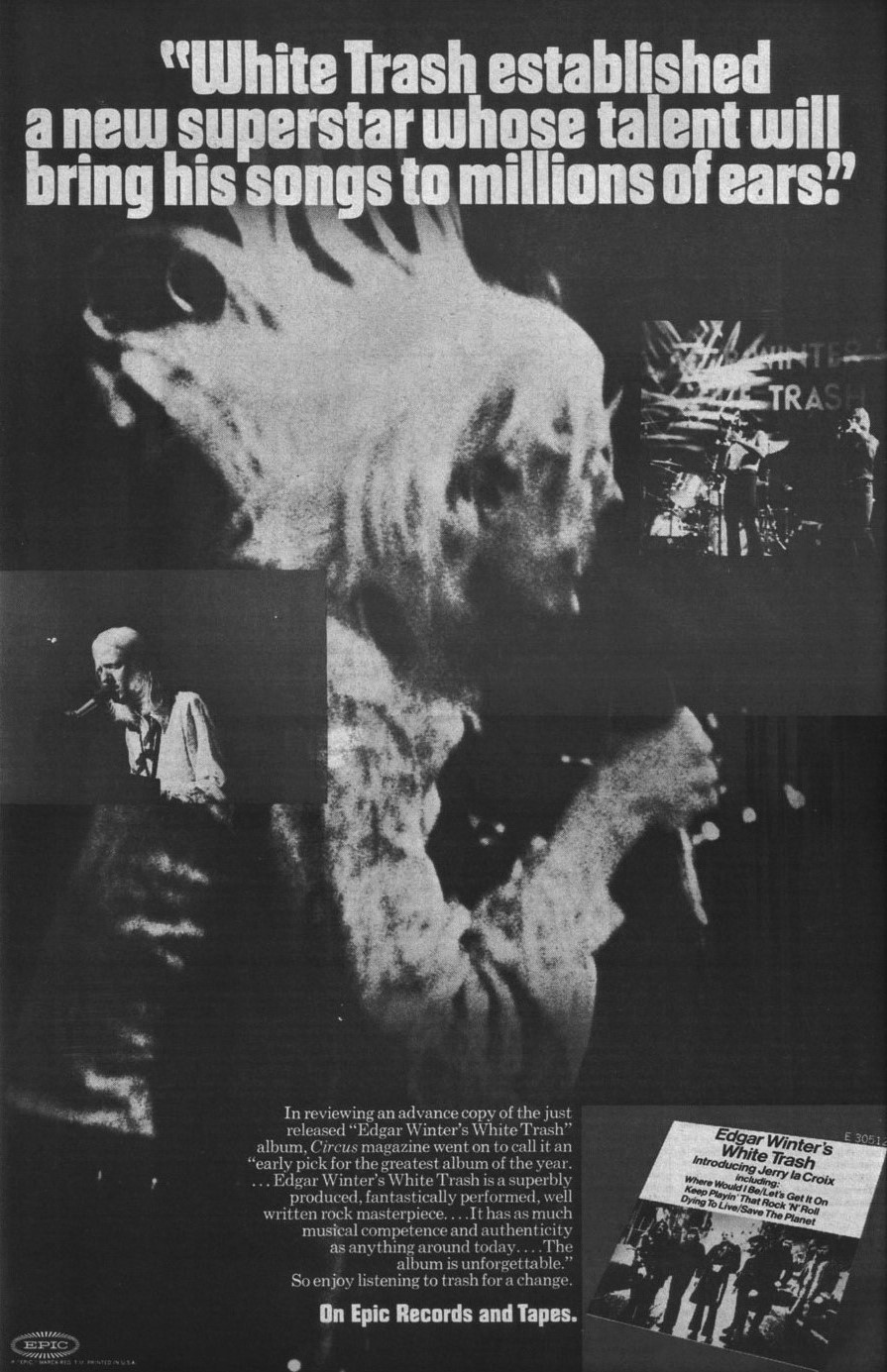
“White Trash established a new superstar whose talent will bring his songs to millions of ears”
Was there a moment in your life when you knew you wanted to become a musician?
George Sheck: I luckily had access to a piano when I was born. I remember picking out music songs very early on the piano by ear. In 3rd grade, I signed up for a band at school. The instructor told me he needed a drummer and handed me drum sticks. I played percussion all through grade school years and was elected to Allstate for timpani twice. In high school, I wanted to play a melodic instrument. I had excellent music instructors who had me study harmony, melody and rhythm. Then The Beatles came along. When I heard them use the harmony and melodic patterns I had been studying in school in their music I was hooked. Paul McCartney played such beautiful bass lines and decided the bass was for me.
What sparked interest in bass?
In high school I was introduced to the music fundamentals, learning scales, music constructions, and analyzing Bach Inventions. Bach was a magician with the bass line. That’s when Paul McCartney hooked me on electric bass.
Where did you grow up and what was the local scene like growing up? Was there a lot of clubs where you could see live acts?
I grew up in a suburban town somewhat near New York City. My home town was normal, but many people there were commuters from NYC and more hip.
Tell us how you learned to play bass and what were some of the important influences for you?
I picked up the bass rather quickly. My first group was a Beach Boy cover band. We played at school dances and other gigs. At the same time a R&B group would let me sit in and eventually sub for their bass player. I would listen to the radio at night with my bass, but no amp, and play along with each song that came on. Then I started playing this way with the room dark. That taught me to play by ear and touch. I often played solos with my eyes shut throughout my career which looked magical to many people.
What are some of the most important players that influenced your own style and what in particular did they employ in their playing that you liked?
I moved on to college which was in Long Island, NY. They had a jazz club that had a big band. I needed to play the bass fiddle to get in the orchestra. I had three months to learn how to play this instrument. I worked hard and took weekly lessons and made it to 4th seat in the bass section.
I was about an hour from New York City and would drive the jazz clubs with some guys and listen to and learn from the likes of Charles Mingus, Ron Carter and Bill Evans among many others.
Another turning point for me was when The Paul Butterfield Blues Band came to our college. I hung around that day and was asked to keep an eye on Mike Bloomfield, the guitarist in the band. I learned the meaning of “keep an eye on” that day. He was WILD. He was all over the school and hitting on girls acting like a mad man. I knew he was a great guitarist and he gave me advice about the business although not much made sense. With all that he was a good soul.
Were you in any bands before joining legendary Edgar Winter’s White Trash? If so, did those bands record any single, album or perhaps you have some demos stored anywhere?
I had to leave school after three years. I played with a few rock and jazz-rock bands around Manhattan and the surrounding places. The only group that had any success to speak of was called Simple Truth. It, like White Trash, was also a large group with three musicians on horn , guitar, bass, drums, piano and vocals. We played totally original music and played many interesting places around the north-eastern USA. The most interesting note was we auditioned for one of the last groups to play at Woodstock, but just missed out! One group auditioned for the great John Hammond as well.
What were the circumstances of you joining Edgar Winter’s White Trash?
In a few months I had to make a choice about my future in music. A friend was playing with the great Peggy Lee. She was winding up a tour in Cape Cod and her bassist was leaving her. I drove up there, had one rehearsal and played with a 30 piece orchestra for the first time. It was a time when rock bands took over the music business. So Peggy added eight Beatles songs to her show. I knew these quite well and also knew her hits, ‘Fever’ and ‘Is That All There Is’ so it went quite well. While I was there, I got a call from a band leader that Judy Collins heard me and wanted to audition me. As soon as I got home, a great friend and super guitarist called to tell me Edgar Winter was looking for a bass player for a new group he was forming. It was an easy choice to play with Edgar Winter.
I met with Edgar in Manhattan and a week later auditioned with his 7 piece rock, blues and gospel horn band. I played with them for 10 minutes. They left the room and came back asking, “Do you want the gig?” I did.
Did you do a lot of shows? What are some that you have the fondest recollections of?
We had two months to get the music ready and record the album at Columbia Records. We put many hours a day and night working on the songs for the album. We were having trouble with the name of the group. Most of the group were from New Orleans and Texas. After many nights and no name, great tenor sax player, John Smith commented that his grandma asked him who these “White Trash” were. So Edgar Winter’s White Trash was born!
Before the album was released we played loads of concerts. Edgar’s brother Johnny Winter was already known as a superstar blues guitarist. Edgar became known for being featured at Johnny’s shows so were very well received on the road. But mostly we flew those days. Miami to Detroit to Austin to Seattle in four nights. I woke up wondering where I was. After the album, with reviews, played even more. We played with so many great groups and stars: B.B. King, Chuck Berry, Jethro Tull, Emerson, Lake & Palmer, The J. Geils Band, The Band, Mountain and so many more. The group we played together with the most was The Allman Brothers.
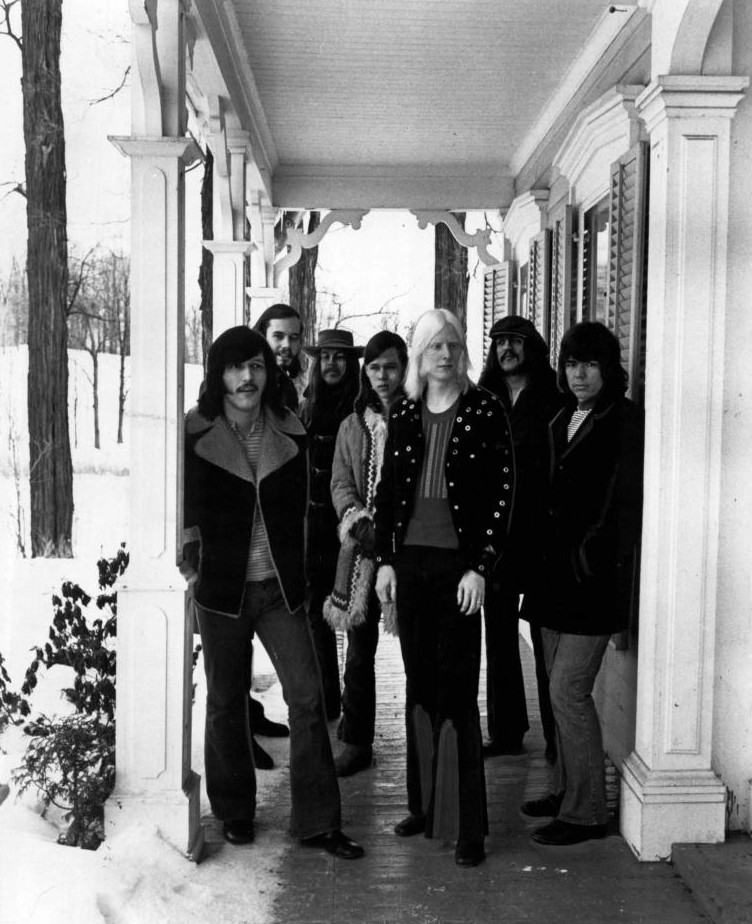
The Fillmore East was one of the most important venues that changed and led the musical revolution of the 1960’s. It would be hard to find a group or artist that didn’t appear there. White Trash was very lucky to be a New York based band like earlier groups like Santana were. Along with being booked there, we were on call any time a group cancelled or there was an open slot. Playing there 8 or 10 times in a year really helped our name become common knowledge. Special thanks to the great Bill Graham who was a big fan of our group and always had time to spend with us.
What can you tell us about writing and recording the 1971 album for Epic?
Like I mentioned, we didn’t have much time to get tight before recording. Shortly before the recording date, we had a change of drummers. Bobby Ramares took over the drum duties. He had played with many of the groups we hit it off from day one. The relationship between drummer and bass has to have a sort of ESP to know what each other was thinking and feeling!
Bobby, me and Edgar on piano were first to record. We played the rhythm parts of the songs that the rest of the band played. Some songs were very easy to lay down and some took two nights each. Edgar demanded perfection and wouldn’t accept anything that wasn’t.
Epic Records, which is part of Columbia Records, was always fun with other artists visiting or recording in other studios. They would often drop by. Clive Davis was always checking in with us as well as celebrities of the music world. When we had finished our parts, I had a well needed couple of weeks off.
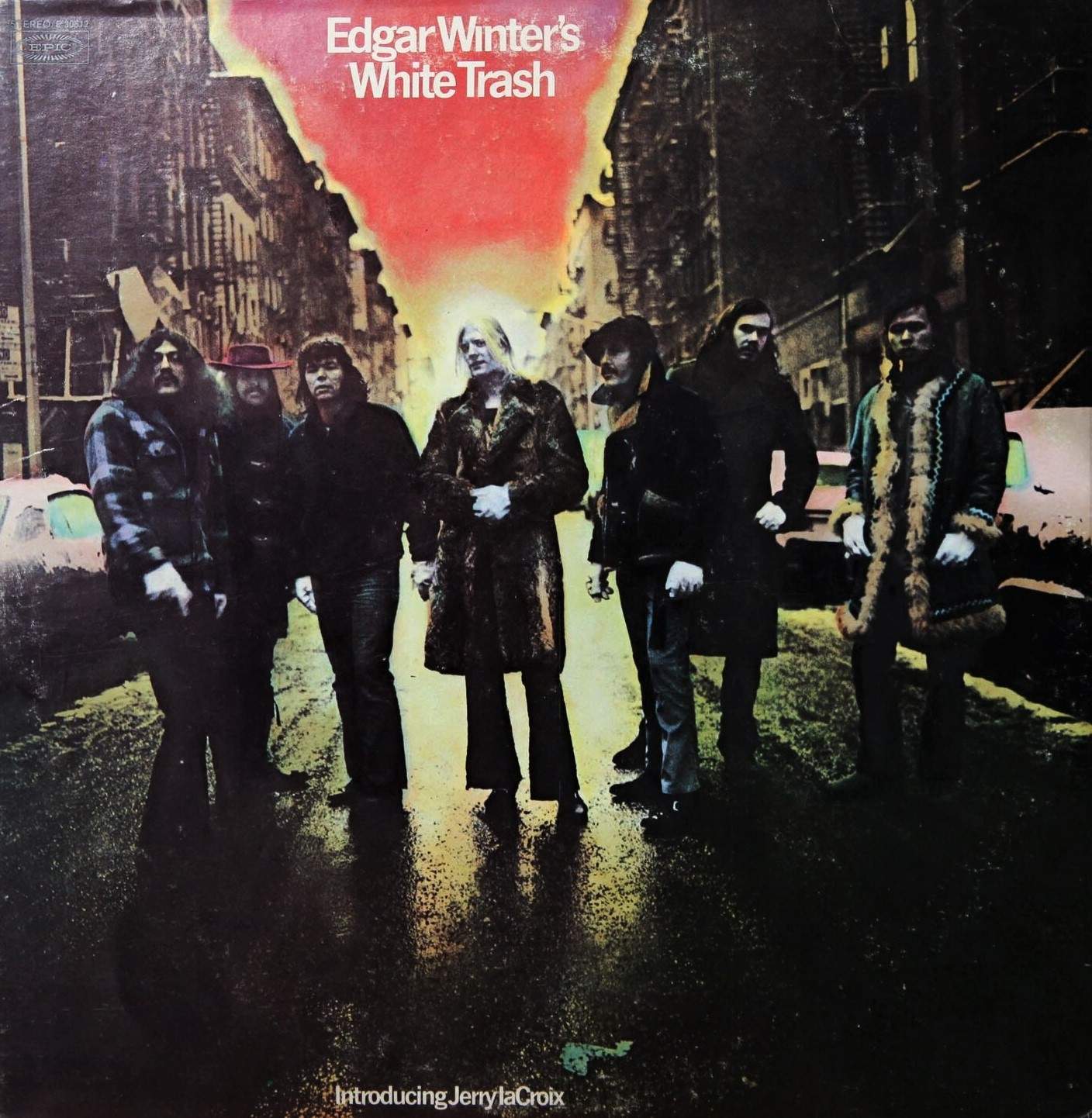
What was the creative process like for the band?
Edgar Winter is a true musical genius! He plays just about any instrument fluently. On this album he plays piano, alto sax and vocals with his 3 and 1/2 octave vocal range. Edgar knows exactly what each musician should play every moment of the track. Playing live he demands the same perfection.
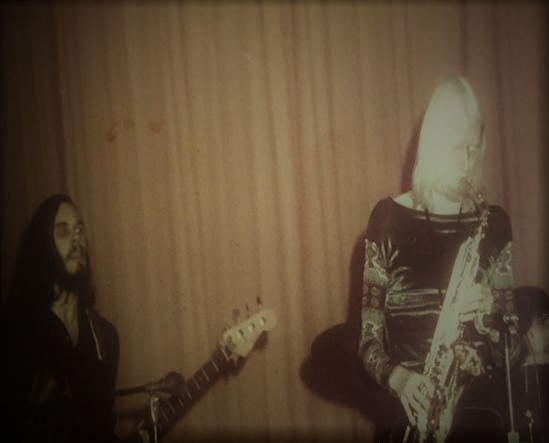
Do you remember what gear the band had at the time?
I played my Fender P-Bass, a 1964 model. We were given Fillmore East Amps which were given to us for their promotion.
They didn’t last long. Here a story: After playing a show at the Fillmore East, the band flies to Detroit. The road manager meets us with a something’s wrong look. The entire rental trunk with almost all the equipment had been stolen. What a drag! We rented and borrowed something to play on every show until everything was replaced.
I found a 1958 Fender P-bass with the anodized pick guard to replace my original bass. The existing event sound setups were very primitive compared to today’s systems. There was usually a bounce back echo that would reach the stage a second or more after it was played. We put drums in the middle of the stage and focus on them to ignore the bounce back ego.
How long did you stay with Edgar Winter’s White Trash?
I played with Edgar Winter for almost two years. In 1972 Edgar let Trash go and put together the Edgar Winter Group. It was a 4 piece group which had great success with songs like ‘Free Ride’ and ‘Frankenstein’!
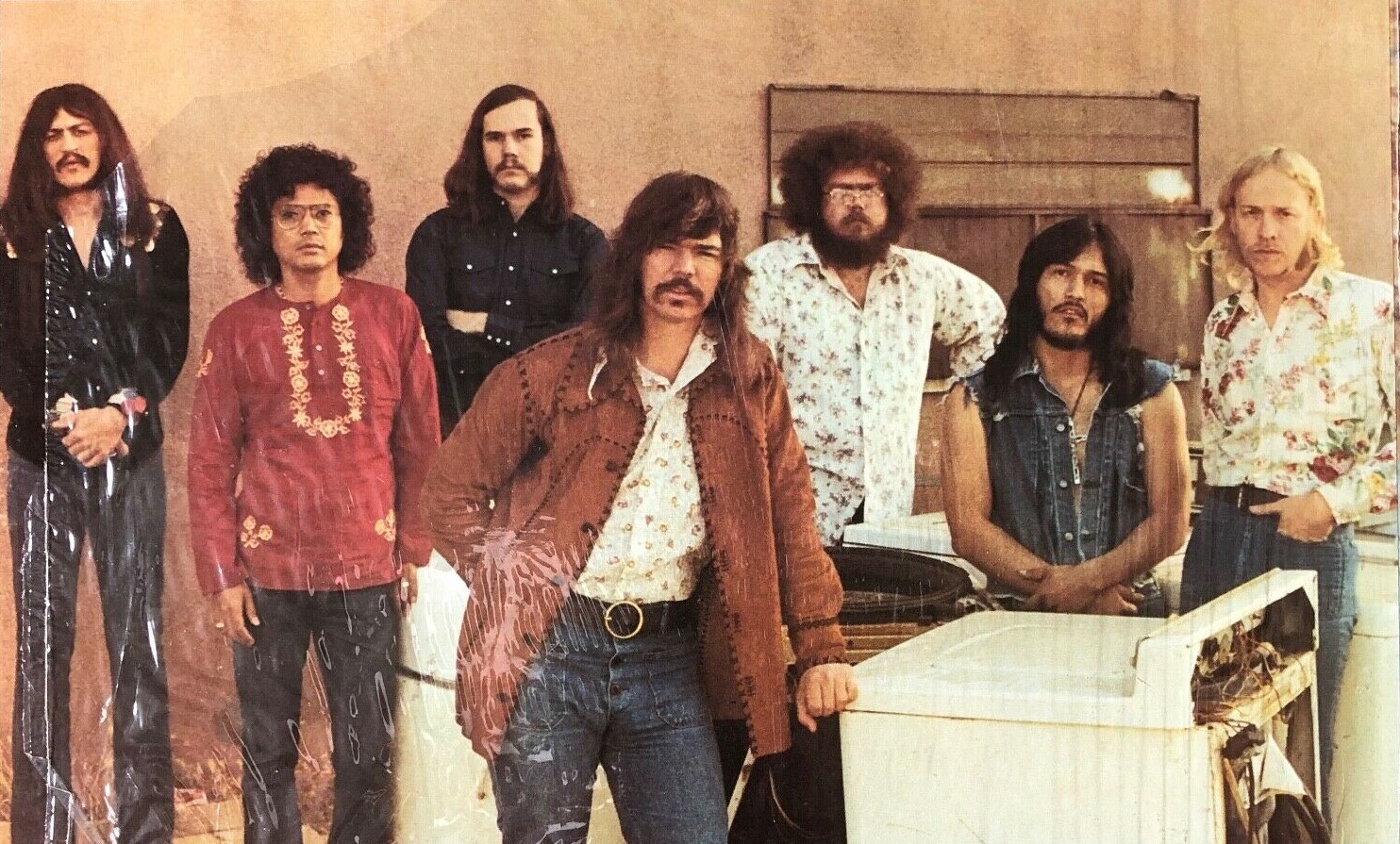
White Trash reformed without Edgar Winter in Los Angeles. Lead singer of White Trash, Jerry LaCroix, led the original musicians with a guitarist and keyboard player we chose in auditions.
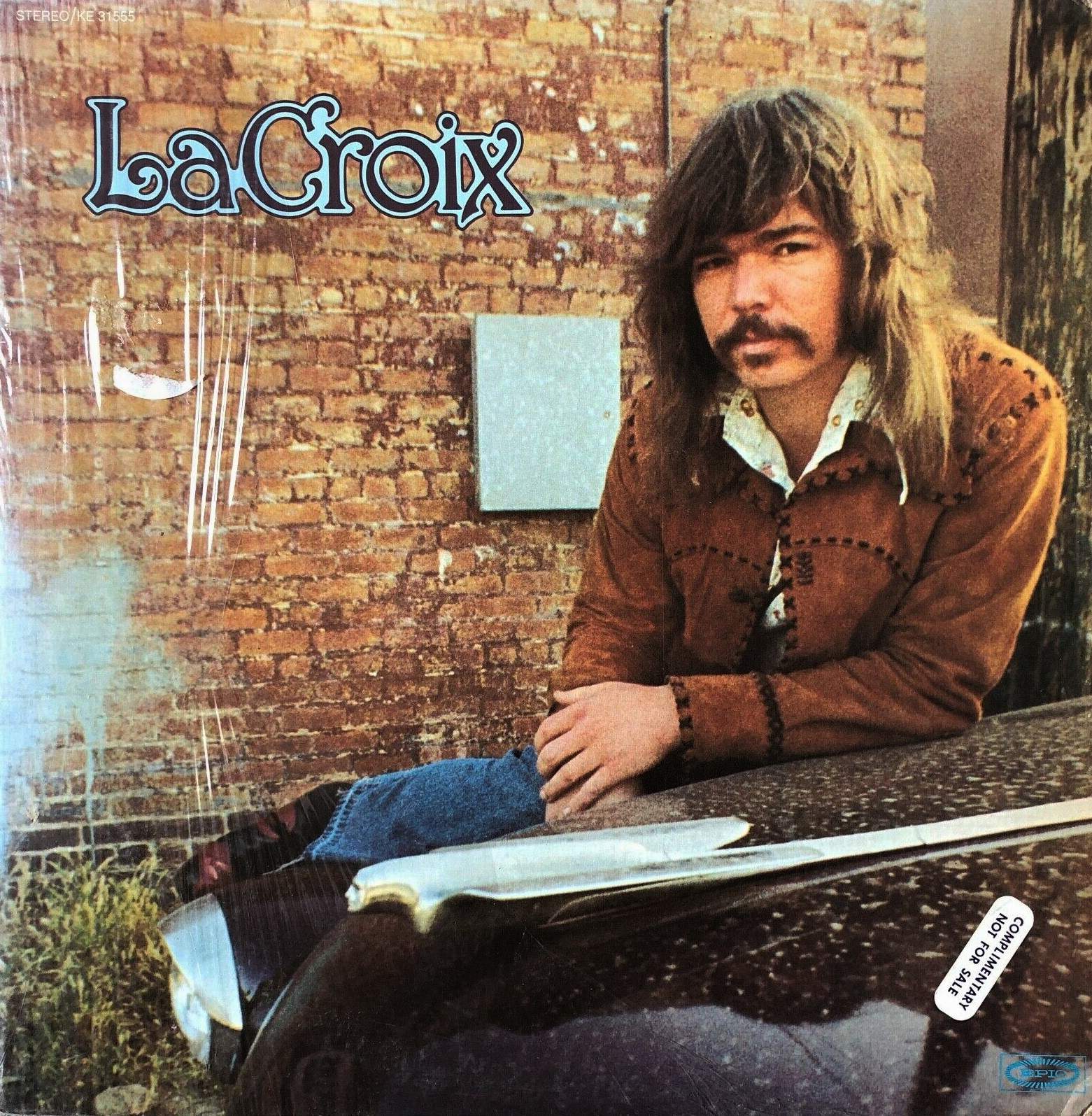
We recorded an album named ‘LaCroix’. We played gigs like the Whisky a Go Go and the Hollywood Bowl. The album had a tough go and we shortly disbanded.
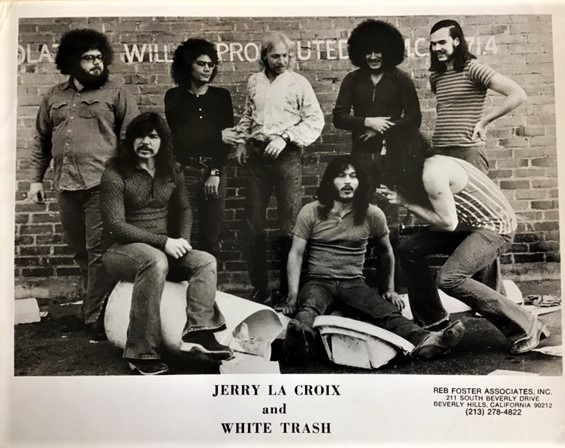
“Six months before Trash moved in, the Band Of Gypsies rented this house”
Any crazy stories that happened in the band?
The below picture was taken when I lived in a very large farm house with 9 or 10 bedrooms which was enough for everyone in the band to have their own except for one of us. There was an empty room downstairs so my girlfriend and I took that room because it was very private! More than 40 years later I am playing at a club in South Carolina. After Edgar Winter was mentioned to the audience a man came over to me and told me he lived on that street near that farmhouse and used to come over and talk to us. He was just a kid then and I remembered the kids on bikes coming around. We talked and he asked what room I stayed in. I described it and he knew which room it was right away. That was Jimi Hendrix’s room! Six months before Trash moved in, the Band Of Gypsies rented this house. I always felt something strange, but special staying in that room!
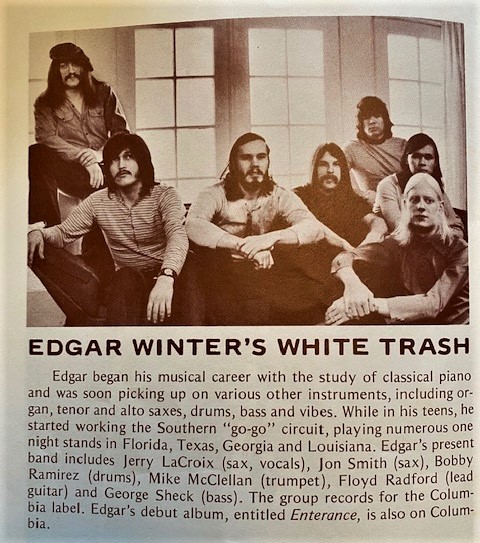
You have also been a friend to Johnny Winter.
Johnny Winter was a big star. He was one of the all time great blues guitarists! When he could he would join us at concerts and play a 5, 7 or 8 song encore set at the end of our set. Johnny had a place near Trash’s farmhouse so we met him a little after we had moved in. One day he was sitting down playing his guitar and I asked to join him. We started playing and he was so fast I could hardly keep up with him. I was able to support him and I saw he was impressed.
(Now Johnny and Edgar were both Albinos. They were all white with no pigment in their skin or hair. They couldn’t spend time in sunlight or they would get dangerous sunburning very quickly. Their vision was also affected so they had very poor vision.) So Johnny leans toward me and studies my right hand. He saw that I was playing with a thumb pick. A pick that is wrapped around the thumb then goes out from below extending like a regular plastic pick. Johnny uses a thumb pick himself but he had never seen a bass player use one. We sounded nice together. Many bass players use their fingers to pluck the strings. Lots of bass players used picks but the thumb picks freed the rest of the fingers and didn’t fall out of your hand. I got along with Johnny from that day on.
Are you still in touch with Edgar Winter?
I’ve seen Edgar three or four times since the Trash days. For a little time Edgar was living close to me in the 80’s and we worked on some new songs he had. It didn’t go too far, but was fun!
There’s a rare psych classic that at the time wasn’t very well known, but these days a lot of people are interested in. Tell us who was D.R. Hooker and how did you end up playing with him? Who were other members of the band and where was the record recorded? Were songs written and arranged by D.R. or did other members participate?
My brother Haywood Sheck was a drummer. We both went to school with D. R. Hooker. Around 1971/1972 my brother asked me if I would play on a record D.R. Hooker was making. I said, yes. D. R. Hooker was a special man with a very unique and one might say different talent. His lyrics were inspired by Jesus Christ and thus predated many Xian bands that later formed. He had a very special way of delivering Christian messages with overlays of distorted psychedelic guitar solos. D. R. also asked percussionist Ken Lovelett to join this project which he did. The basic tracks were recorded together with D. R., Haywood and Ken. The best local musicians were hired to add the background parts. It took more than two months of very long sessions and mixing until the album was completely finished.
This was truly a labor of love project as we donated our time. The album was self-released and it came about some months later in 1972.
We never played together. My brother was contacted around the Millennium from a European collector who told him that the album ‘The Truth’ became a cult record in Europe. I went to my attic and played my own copy of the album for the first time in 30 years. It sounded fantastic, especially since we only had a primitive 4-track recorder and the mixing was so complex with backgrounds consisting of brass, strings and choir.
It might impress even George Martin [Laughs].
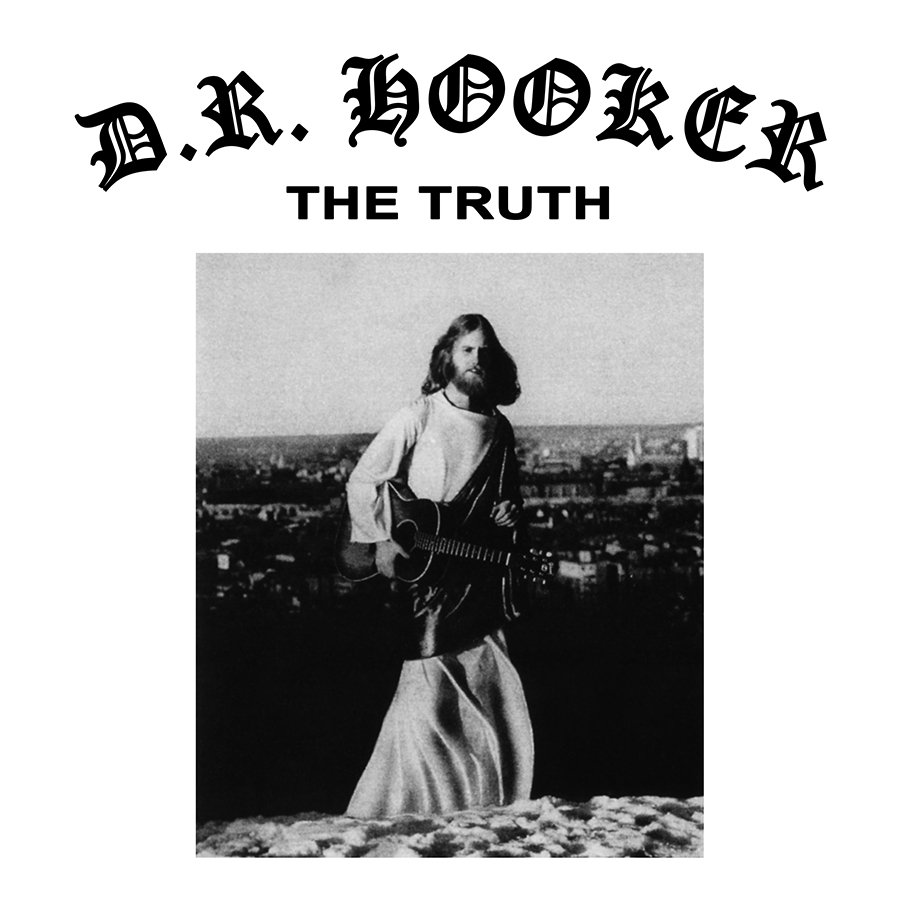
My recollection of D.R. Hooker is a funny and friendly guy. He was younger than me, but around the age of my brother, Haywood. It was after I finished recording and touring with Edgar Winter that D.R. Hooker asked if I would be interested in working on this project together with my brother. It would be an opportunity to try some of the techniques I had learned in Columbia Records studios with Edgar Winter and agreed to help him.
The first time I played with D.R. Hooker, he had cassette recordings of his voice and guitar. As far as I know he never played with a group before, much less record music. As the three of us played his songs I needed to help him with the structure and arrangement of the songs. He caught on quickly and the tracks started to sound very musical. He or a friend of his had a four track recorder and we recorded his guitar, bass and drums with a vocal on the fourth track. To get more tracks available, we had to combine the three instruments and place them in the fourth track by removing his vocal and mixing the balance of the other three instruments into one. The catch was that once you combined the three tracks there was no way to make changes. It took us 7 or 8 days to complete this part of the recording. With that being done, I asked several local musicians that I knew if they would come by and record more parts. A dozen musicians and vocalists added their parts and the music was complete.
I never saw D.R. Hooker after he stopped by with the completed record. He gave LPs to me and to my brother.
Tell us about ‘Entrance,’ Winter’s debut album.
‘Entrance’ was Edgar’s first album he recorded with a band he had in Texas. The album was a masterpiece!!!
How did you get involved with George Pavlis?
George Pavlis is a great pianist from Connecticut. We played gigs and recorded in the 80’s. He went on to play with Vicky Sue Robinson of ‘Turn The Beat Around’ fame. I passed on that opportunity. The one that got away!
Who is Bobby L. Day and when was the ‘I Love A Banjo’ recorded?
Bobby Day was a buzz saw banjo artist. He could have kept up with any of today’s guitar greats on a banjo. He also plays piano, guitar and drums. I added bass parts and worked with the recording engineer.
This is also evident when you play with Nicole Pasternak. Nicole was my first wife. We had two children together. Nicole was an excellent jazz vocalist with the ability of scat singing like another member of the horn section. We wrote several songs which we made into a live CD. We couldn’t get the project off.
What currently occupies your life? Do you have any other active projects going on at this point?
I moved to Hilton Head Island, South Carolina 18 years ago. The music scene is great here and in neighboring Savannah, Georgia. Busy as I could be for all the time I’ve been here up until 2020 when for health reasons I have decided to retire.
Are you still in touch with any member of White Trash?
Since I moved to South Carolina I’ve lost touch with the guys in the band who are still with us. Bobby Ramirez and Jerry LaCroix have both left us and Mike McLellan the trumpet player in the band moved to Alaska after Trash broke up and no one heard a thing about him.
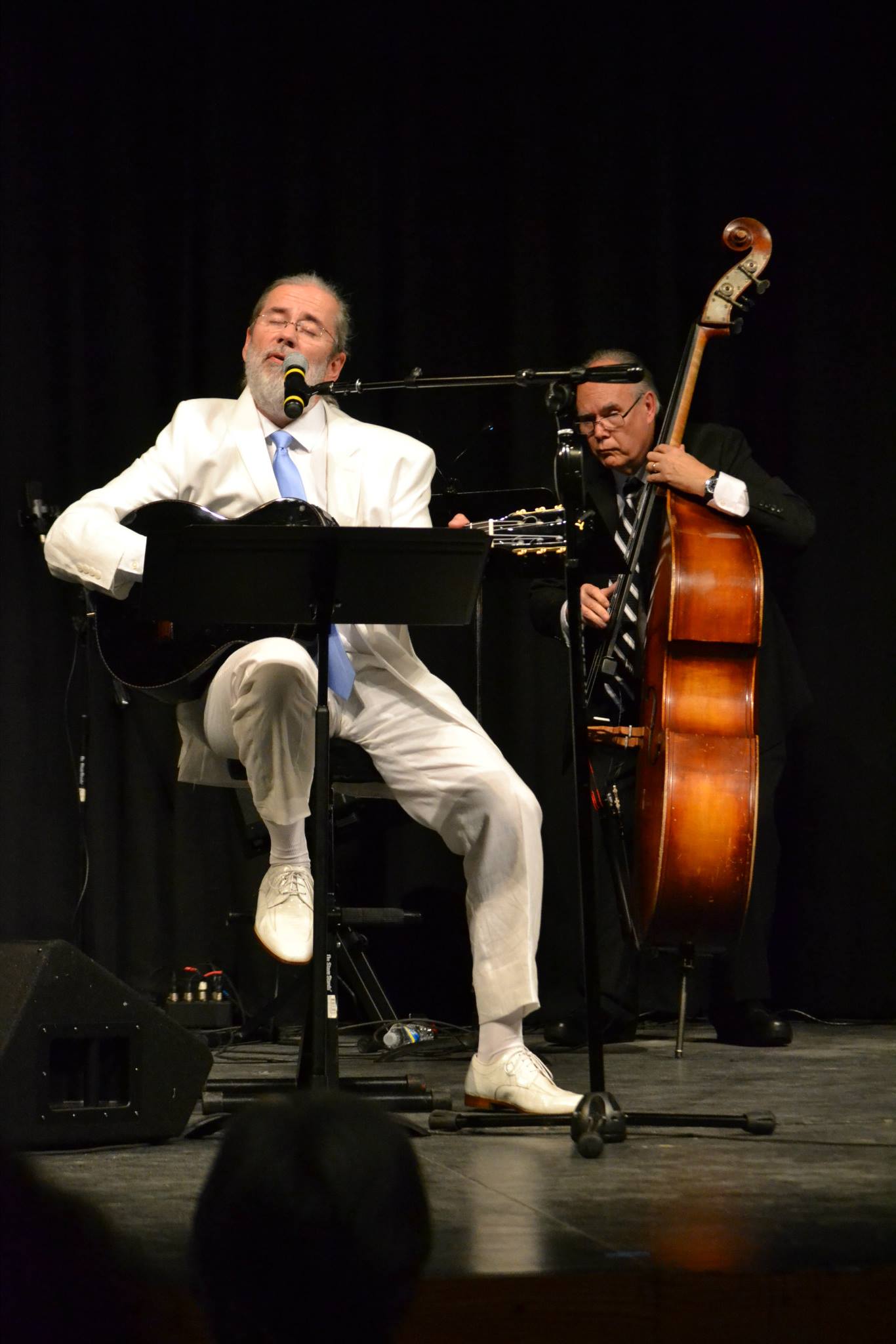
Thank you for taking your time. Last word is yours.
Thank you for your passion for music and good luck with your business!
Klemen Breznikar
All photo materials are copyrighted by their respective copyright owners, and are subject to use for INFORMATIONAL PURPOSES ONLY!

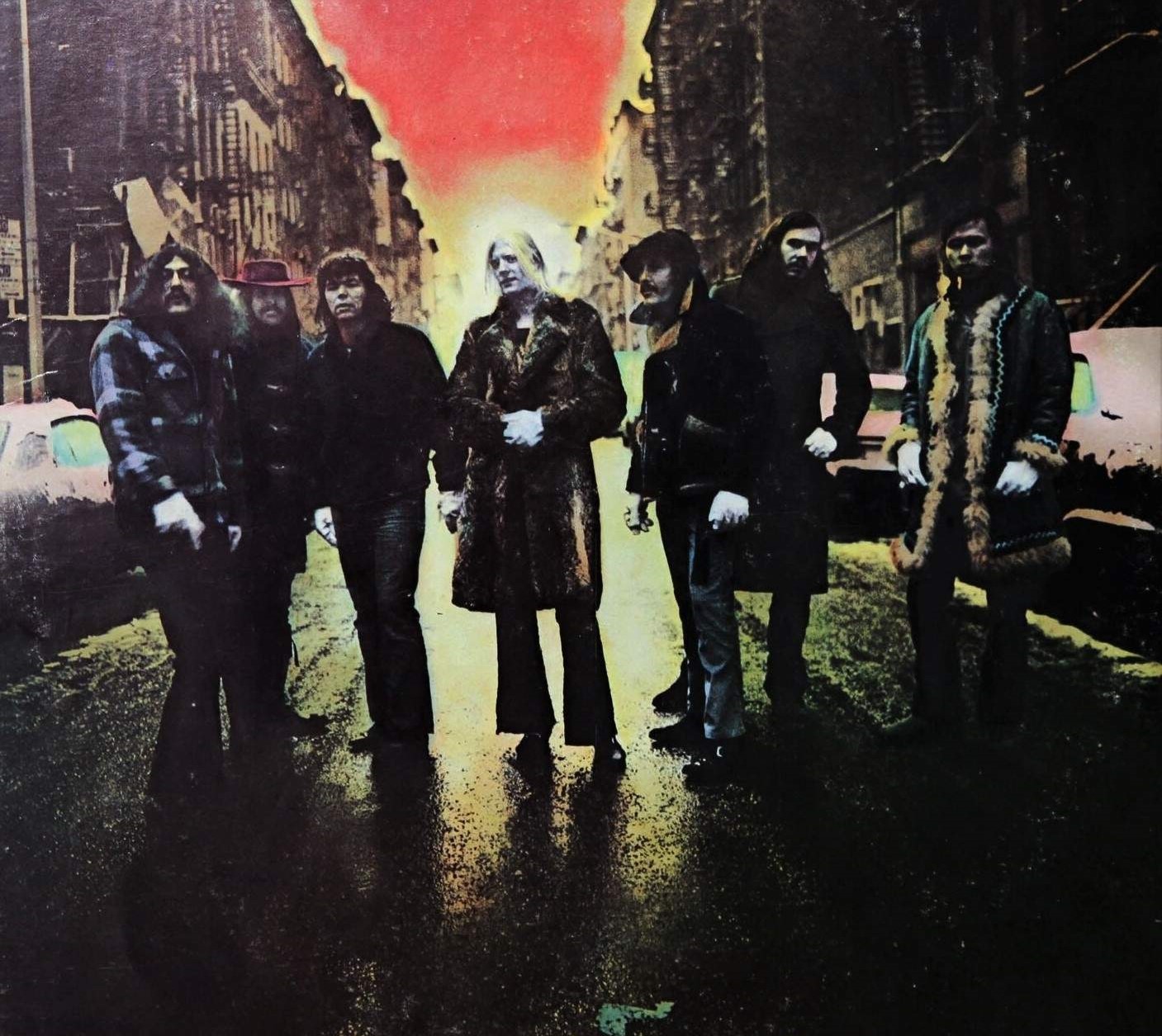



That 1972 D.R.Hooker album”The Truth” is a fantastic album of scorching guitar psychedelia with strong religious overtones,and for a private press is a well played,arranged and produced album recorded at Dynamic Recording Studios,New Haven,Conn.,and its surprising to hear it was all done on a simple 4 track.I do have a cd reissue released by Subliminal Sounds in 2000 with bonus tracks that are just as enjoyable,and featured on a 1974 album”Armageddon”which was recorded at Ranaissance Studios,Maynard,Mass.Which does NOT feature the bass playing of George Sheck.
It’s good to hear D.R.Hooker was an old school friend of Mr Sheck,and he gave his bass playing as a friendly neighborly thing,which sounds so old school and pleasing to hear in these days of me,me,me……..and what marvellous backing was provided for D.R.Hooker,and i’m embarrassed to say i was ignorant of Mr Shecks involvement on this fine album but also his brother Haywood,so i’m glad this interview raised his involvement in NOT only this album,but his other participation in other bands and recordings.I’m looking at the cd info as i write,and there’s George and Haywood Sheck in the credits.Been in front of me all the time.
I do have Johnny Winters debut album”The Progressive Blues Experiment” released on Imperial Records in 1969,originally recorded at The Vulcan Gas Company Nightclub in Austin ,Texas in 1967. So good to read that Johnny used to appear at gigs and take part with White Trash.
Also there was a Scottish group from around the same time called White Trash,signed to the Beatles Apple Records,who released a couple of 45s,but for the second,they shortened their name to Trash.I wonder if Edgar Winter and the group knew of this “other”White Trash?It’s a great name none the less.
I also have double cd collection of early Johnny Winter recordings,titled”Byrds Can’t Row Boats”released by Cicadelic Records in 2016,covering the years 1965-68,when he was contracted with Cascade Records Roy Ames,these recordings show a different side to Johnny Winter,as he plays folk rock,garage,psychedelia and blues,replete with glorious fuzz guitar galore,and recorded with one of his heroes Calvin”Loudmouth”Johnson,resulting in enough songs for an album,which never transpired.
Apologies for possibly going off subject,but with George Shecks connection to both Edgar and Johnny Winter,i thought some readers may also be interested other recordings!!
Thank YOU for another fine and interesting interview.
I saw Edgar Winter a few years ago, opening up for Alice Cooper, and he was phenomenal!
The LaCroix album was a classic and very underestimated!
Great interview with George. I’ve been a big fan of Edgar Winter for years. George’s brother Woody Sheck was a good friend as we played in a travelling show band called Wall Street in the 1980’s. I live in the Savannah area .
Are you still playing music